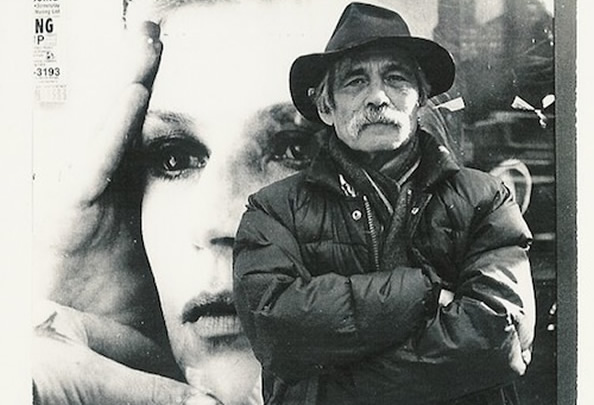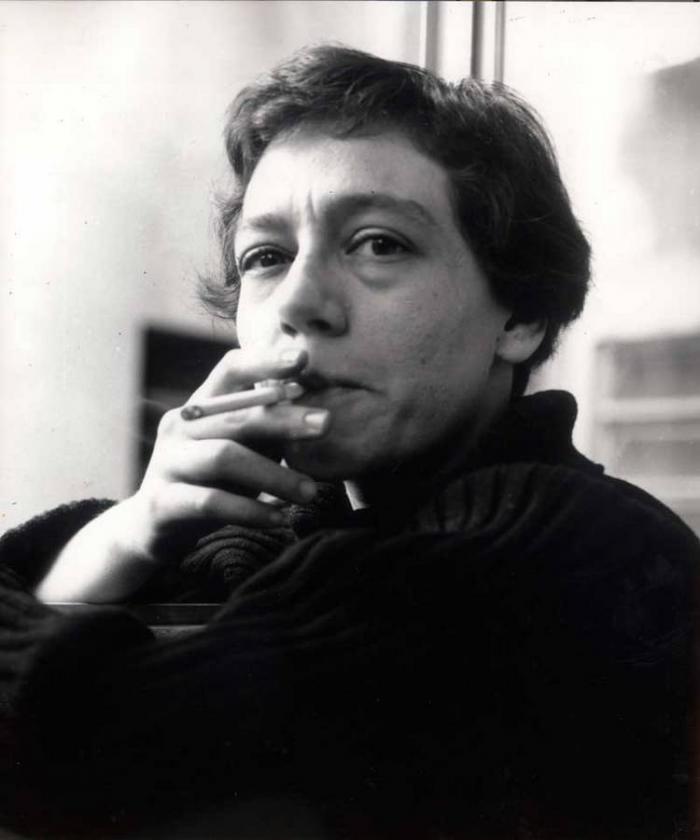[As a follow-up to Barbaric Vast & Wild,the gathering of outside & subterranean poetry that John Bloomberg-Rissman & I assembled several years ago, I’ve been giving further thought to the poetry imbedded in the lyrics of so-called popularsong as manifested in particular in the orbit of contemporary blues- and rock-derived singer-poets from Bob Dylan & Leonard Cohen through Patti Smith, Jim Carroll & Nick Cave, among so many others. In Cave’s case, as I scan some of his later work in printed form, the poetry leaves traditional line & rhyme behind toward a kind of open or projective verse that places him among the experimental/avant-garde poets of my generation & somewhat later of his. Of the separation of words from music – long viewed as a stumbling block to the recognition of song lyrics as poetry – Cave himself notes in the present instance: “Jesus Alone is fine. As Rings of Saturn is mostly extemporised I'm not sure how it actually holds up on the page. It gets a little ropey at times which is maybe part of its charm. As songwriting is performative, the beautiful thing about it is that much is left in just because it sounds good. For me Rings of Saturn feels like a bit of a grab-bag of stuff made good because it's sung with all the heart in the world. But beware putting it down on paper!” And yet it’s precisely on the page that its kinship to the new/old world of poems and poetics (both form & content) becomes clear – as another & necessary step toward a living omnipoetics. (J.R.)]
Rings of Saturn
Upside down and inside out and on all eights, like a
funnel-web
Like a black fly on the ceiling, skinny, white haunches
high in the sky
And a black oily gash crawling backwards across the
carpet to smash all over everything
Wet, black fur against the sun going down, over the
shops and the cars and the crowds and the town
And this is the moment, this is exactly where she is
born to be
Now this is what she does and this is what she is
And this is the moment, this is exactly where she is
born to be
This is what she does and this is what she is
funnel-web
Like a black fly on the ceiling, skinny, white haunches
high in the sky
And a black oily gash crawling backwards across the
carpet to smash all over everything
Wet, black fur against the sun going down, over the
shops and the cars and the crowds and the town
And this is the moment, this is exactly where she is
born to be
Now this is what she does and this is what she is
And this is the moment, this is exactly where she is
born to be
This is what she does and this is what she is
Her eyes that look at me through her rainy hair
Are two round holes where the air buckles and
rushes in
Her body, moon blue as a jellyfish
And I'm breathing deep and I'm there and I'm
also not there
And spurting ink over the sheets but she remains,
completely unexplained
Or maybe I'm just too tongue-tied to drink it up
and swallow back the pain
I thought slavery had been abolished
How come it's gone and reared its ugly head again?
And this is the moment, this is exactly what she is
born to be
And this is what she does and this is what she is
And this is the moment, this is exactly what she is
born to be
This is what she is and this is what she does
And now she's jumping up with her leaping brain
Stepping over heaps of sleeping children
Disappearing and further up and spinning out again
Up and further up she goes, up and out of the bed
Up and out of the bed and down the hall where she
stops for moment and turns and says
"Are you still here?"
And then reaches high and dangles herself like a
child's dream from the rings of Saturn
Are two round holes where the air buckles and
rushes in
Her body, moon blue as a jellyfish
And I'm breathing deep and I'm there and I'm
also not there
And spurting ink over the sheets but she remains,
completely unexplained
Or maybe I'm just too tongue-tied to drink it up
and swallow back the pain
I thought slavery had been abolished
How come it's gone and reared its ugly head again?
And this is the moment, this is exactly what she is
born to be
And this is what she does and this is what she is
And this is the moment, this is exactly what she is
born to be
This is what she is and this is what she does
And now she's jumping up with her leaping brain
Stepping over heaps of sleeping children
Disappearing and further up and spinning out again
Up and further up she goes, up and out of the bed
Up and out of the bed and down the hall where she
stops for moment and turns and says
"Are you still here?"
And then reaches high and dangles herself like a
child's dream from the rings of Saturn
Magneto
Mostly I never knew which way was out
Once it was on, it was on and that was that
The umbilicus was a faucet that fountained rabid
blood
And I spin on my wheel like a laboratory rat
I was an electrical storm on the bathroom floor,
clutching the bowl
My blood was for the gags and other people's
diseases
My monstrous little memory had swallowed me
whole
It was the year I officially became the bride of
Jesus
In love, in love, in love you laugh
In love you move, I move and one more time
with feeling
For love, you love, I laugh, you love
Saw you in half and the stars are splashed
across the ceiling
Oh, the urge to kill somebody was basically
overwhelming
I had such hard blues down there in the
supermarket queues
I had a sudden urge to become someone,
someone like you
Who started out with less than anyone I
ever knew
In love, in love, I love, you love, I laugh,
you love
I move, you move and one more time with
feeling
I love, you love, I laugh, you love
I'm sawn in half and all the stars are splashed
across the ceiling
Oh, and oh, you come shyly
And softly to the hole to drink
Come as far as the edge of my blood, then swim
And in the bathroom mirror I see me vomit in
the sink
And all through the house we hear the hyena's
hymns
Of love, I love, you love, I love, you love, I laugh,
you love
I move, you move, you move, and one more time
with feeling
I love, you love, I laugh, you love
We saw each other in half and all the stars have
splashed and splattered across theceiling
Once it was on, it was on and that was that
The umbilicus was a faucet that fountained rabid
blood
And I spin on my wheel like a laboratory rat
I was an electrical storm on the bathroom floor,
clutching the bowl
My blood was for the gags and other people's
diseases
My monstrous little memory had swallowed me
whole
It was the year I officially became the bride of
Jesus
In love, in love, in love you laugh
In love you move, I move and one more time
with feeling
For love, you love, I laugh, you love
Saw you in half and the stars are splashed
across the ceiling
Oh, the urge to kill somebody was basically
overwhelming
I had such hard blues down there in the
supermarket queues
I had a sudden urge to become someone,
someone like you
Who started out with less than anyone I
ever knew
In love, in love, I love, you love, I laugh,
you love
I move, you move and one more time with
feeling
I love, you love, I laugh, you love
I'm sawn in half and all the stars are splashed
across the ceiling
Oh, and oh, you come shyly
And softly to the hole to drink
Come as far as the edge of my blood, then swim
And in the bathroom mirror I see me vomit in
the sink
And all through the house we hear the hyena's
hymns
Of love, I love, you love, I love, you love, I laugh,
you love
I move, you move, you move, and one more time
with feeling
I love, you love, I laugh, you love
We saw each other in half and all the stars have
splashed and splattered across theceiling
Jesus Alone
You fell from the sky crash landed in a field near
the river Adur
Flowers sprang from the ground, lambs burst from
the wombs of their mothers
In a hole beneath the bridge, you convalesced, you
fashioned masks of clay and twigs
You cried beneath the dripping trees, a ghost song
lodged in the throat of a mermaid
With my voice I am calling you
You're a young man waking covered in blood that is
not yours
You're a woman in a yellow dress surrounded by a
charm of hummingbirds
You're a young girl full of forbidden energy flickering
in the gloom
You're a drug addict lying on your back in a Tijuana
hotel room
With my voice I am calling you
With my voice I am calling you
You're an African doctor harvesting tear ducts
You believe in God, but you get no special dispensation
for this belief now
You're an old man sitting by a fire, you're the mist
rolling off the sea
You're a distant memory in the mind of your creator,
don't you see?
With my voice I am calling you
With my voice I am calling you
Let us sit together until the moment comes
With my voice I am calling you
With my voice I am calling you
With my voice I am calling you
With my voice I am calling you
the river Adur
Flowers sprang from the ground, lambs burst from
the wombs of their mothers
In a hole beneath the bridge, you convalesced, you
fashioned masks of clay and twigs
You cried beneath the dripping trees, a ghost song
lodged in the throat of a mermaid
With my voice I am calling you
You're a young man waking covered in blood that is
not yours
You're a woman in a yellow dress surrounded by a
charm of hummingbirds
You're a young girl full of forbidden energy flickering
in the gloom
You're a drug addict lying on your back in a Tijuana
hotel room
With my voice I am calling you
With my voice I am calling you
You're an African doctor harvesting tear ducts
You believe in God, but you get no special dispensation
for this belief now
You're an old man sitting by a fire, you're the mist
rolling off the sea
You're a distant memory in the mind of your creator,
don't you see?
With my voice I am calling you
With my voice I am calling you
Let us sit together until the moment comes
With my voice I am calling you
With my voice I am calling you
With my voice I am calling you
With my voice I am calling you

























